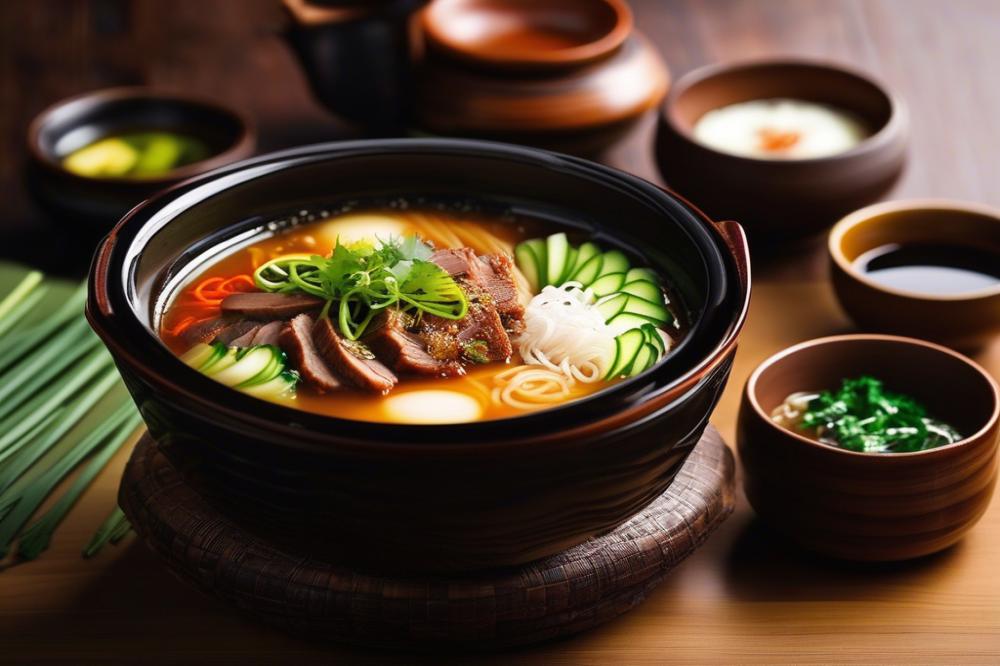Introduction
Dwaeji Gukbap is a beloved dish in Korean cuisine. This comforting soup offers a warm embrace on cold days. Made primarily with pork and rice, it holds a significant place among traditional dishes. Many consider it a go-to comfort food, especially during the winter months. Ingredients blend beautifully to create a hearty meal that brings people together.
The dish features a delicious broth that is both spicy and flavorful. It warms the soul while satisfying hunger. Many enjoy exploring various pork recipes, as they add layers of taste and texture. In busy households, easy recipes like this one become favorites. The way the rice soaks up the broth enhances the overall experience.
This style of Pork Rice Soup is not just about nourishment. It represents a connection to family and cultural traditions. Each spoonful contains history and warmth. Often, friends gather to enjoy this soothing meal, creating memories around the table. The spicy notes in the soup invigorate the senses and add to the comfort. Such dishes highlight the essence of Korean culinary practices.
Understanding Dwaeji Gukbap
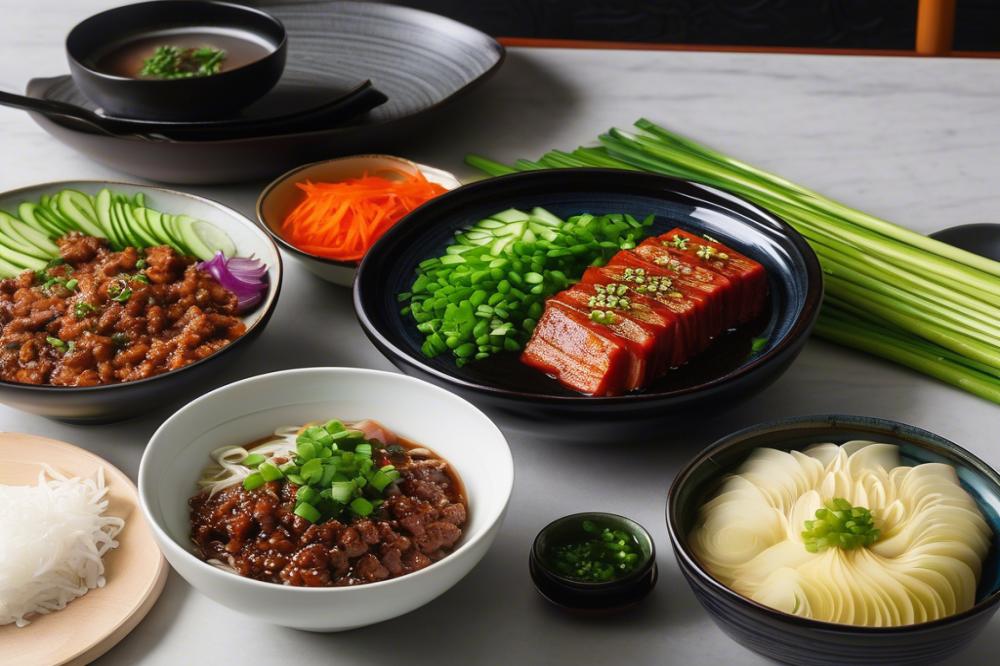

Definition of Dwaeji Gukbap
Dwaeji Gukbap is a hearty Pork Rice Soup from Korea. This dish features tender pieces of pork simmered in a rich, flavorful broth. Spicy elements often accompany the soup, offering warmth and depth. White rice is traditionally added, creating a filling meal. Fans of Korean cuisine appreciate how comforting this soup can be on a chilly day.
Historical Background and Regional Variations
Historically, Dwaeji Gukbap has roots in the southern region of Korea. It began as a simple dish meant for farmers in need of sustenance. Over time, it transformed into a beloved meal across the country. Each region adds its own twist, from ingredient choices to spice levels. Some variations feature local vegetables or different seasonings, showcasing the diversity in traditional dishes.
Importance of Dwaeji in Korean Cooking
Pork, known as Dwaeji in Korean, holds a special place in many pork recipes. The meat is versatile and packed with flavor. Cooks appreciate its ability to absorb the taste of spices and broth. In many families, it symbolizes richness and is often served during celebrations. The use of Dwaeji elevates many dishes, making them more savory and satisfying.
Overview of the Dish’s Role as a Comfort Food
Many people consider Dwaeji Gukbap to be a comforting soup. Memories often attach themselves to this dish, especially for those who grew up enjoying it. On cold days, a warm bowl of this rice soup brings happiness and nostalgia. Sharing this meal with family can create lasting bonds. For those seeking easy recipes, it remains a popular choice, perfect for both new cooks and seasoned chefs alike.
Ingredients List and Quantities
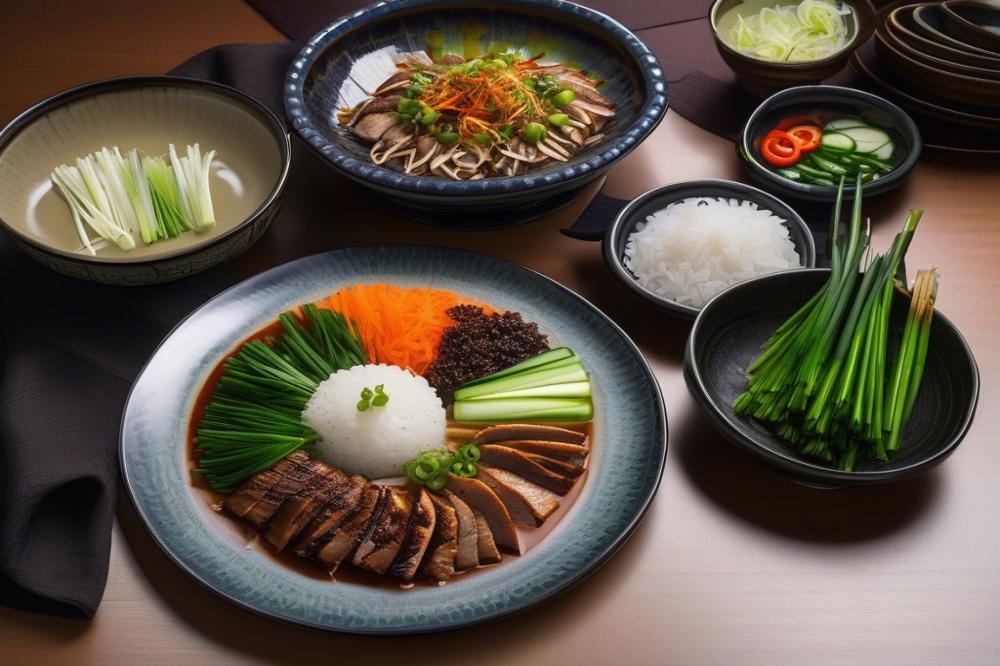

To prepare a delicious bowl of Dwaeji Gukbap, gathering the right ingredients is key. Each component adds to the overall flavor and comfort of this traditional dish. Below is a detailed list of what you’ll need.
- Pork belly or shoulder – 500g
- Jasmine rice – 1 cup
- Water or broth – 6 cups
- Green onions – 2, chopped
- Garlic – 4 cloves, minced
- Korean chili powder (gochugaru) – 1 tbsp
- Soy sauce – 2 tbsp
- Sesame oil – 1 tbsp
- Salt – to taste
- Pepper – to taste
This rich cut provides the necessary fat and flavor for the comforting soup. It’s tender and juicy, perfect for hearty soup recipes.
Choosing jasmine rice ensures a fragrant addition. It adds a wonderful texture to the rice soup.
A good quality broth can elevate the taste significantly. Homemade broth shines in this recipe, but water works just fine.
These add a fresh, crisp flavor. They also contribute to the overall appearance of the dish.
This ingredient packs a punch. Garlic brings depth and enhances the overall flavor profile.
Using this chili powder introduces a subtle heat. It’s essential for achieving that signature spicy soup essence.
This ingredient adds saltiness and depth. Its umami flavor complements the hearty meat.
This aromatic oil brings nuttiness and richness. Just a touch enhances the entire dish beautifully.
Adjusting salt is vital for balance. Each cook has their preference regarding seasoning.
Freshly ground pepper can brighten the dish. Be sure to add this as you go, according to your taste.
Nutritional Information
Understanding the nutritional values aids in meal preparation. Let’s break down the nutrients found in each ingredient:
- Pork belly (500g): Approximately 1,300 calories, 99g protein, 99g fat, 0g carbohydrates.
- Jasmine rice (1 cup cooked): About 205 calories, 4g protein, 0.5g fat, 45g carbohydrates.
- Water or broth (6 cups): 0 calories, 0g protein, 0g fat, 0g carbohydrates (varies with broth).
- Green onions (2): Roughly 10 calories, 1g protein, 0g fat, 2g carbohydrates.
- Garlic (4 cloves): About 20 calories, 1g protein, 0g fat, 5g carbohydrates.
- Korean chili powder (1 tbsp): Nearly 30 calories, 2g protein, 1g fat, 6g carbohydrates.
- Soy sauce (2 tbsp): Approximately 20 calories, 2g protein, 0g fat, 2g carbohydrates.
- Sesame oil (1 tbsp): About 120 calories, 0g protein, 14g fat, 0g carbohydrates.
- Salt and pepper: Minimal calories, negligible macronutrients.
This flavorful mix of ingredients balances calories, protein, fats, and carbohydrates. Each item contributes to the delightful experience of enjoying Korean cuisine. Prepare your work area, and let’s get cooking!
Cooking Instructions
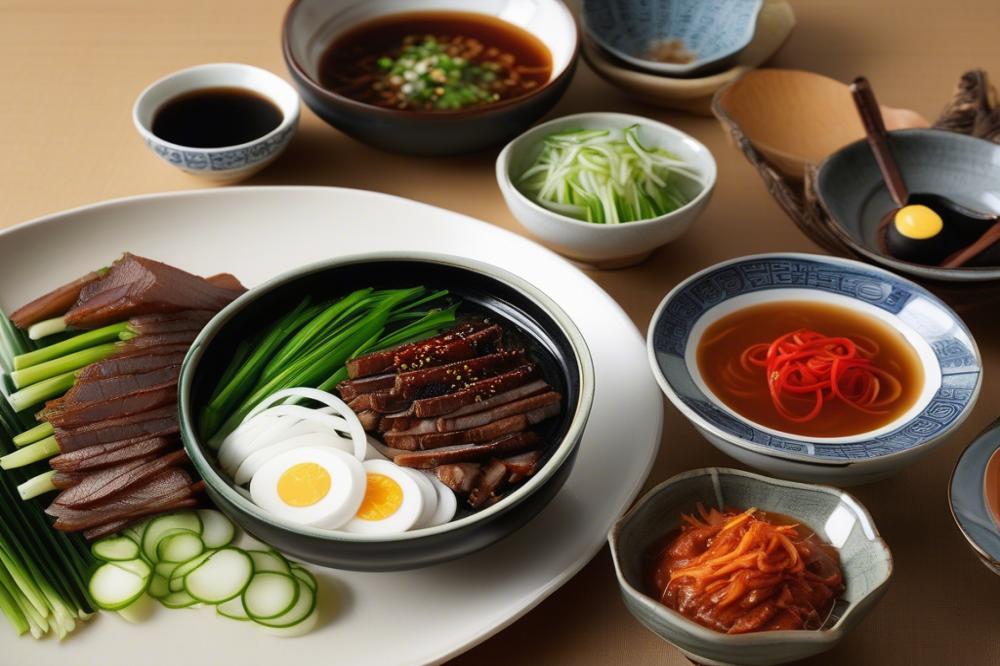

Step-by-step method for preparing Dwaeji Gukbap
Begin with the pork. Choose a cut that is tender, such as pork belly or shoulder. Cut the meat into bite-size pieces. This will help the pork cook evenly. Next, heat a large pot over medium heat. Add a little oil to the pot. Once the oil is hot, add the pork pieces. Cook until they are browned on all sides. This usually takes about 5 to 7 minutes. Browning the meat adds flavor, setting the stage for a comforting soup.
After browning, it’s time to make the broth. Add water to the pot, enough to cover the pork completely. Introduce aromatics such as garlic, onion, and ginger. These ingredients will infuse the broth with warmth. To spice things up, use gochugaru (Korean red pepper flakes) and a bit of soy sauce. Let this mixture come to a boil. Reduce the heat to let it simmer. A gentle simmer allows the flavors to deepen over about an hour. Ensure the broth becomes richly flavorful during this time.
While the broth simmers, prepare the rice. Use short-grain rice for the best texture. Wash the rice first until the water runs clear. Then, cook it according to package instructions. Once the rice is done, add it to the pot with the broth and pork. Stir gently to combine everything. This addition creates a delightful rice soup that complements the pork perfectly.
For final seasoning, taste the soup. Adjust with salt and pepper as needed. If desired, add more gochugaru for extra spiciness. Let it simmer for a few more minutes to meld all the flavors. Once ready, serve the soup hot, garnished with chopped green onions or sesame seeds. These simple toppings enhance both presentation and taste. A bowl of this traditional dish embodies Korean cuisine’s rich, savory profile.
Tips for enhancing flavors and presentation
To boost the soup’s flavor, consider adding a splash of sesame oil before serving. It adds a nutty aroma that elevates the dish. Fresh herbs like cilantro can also provide a refreshing contrast to the rich broth. For a delightful crunch, serve with pickled vegetables on the side. These add a bright flavor balance. You can also place slices of kimchi in the bowl for an authentic touch.
Presentation matters, too. Use a deep bowl to showcase the soup’s vibrant colors. Arrange the rice and pork attractively. A sprinkle of green onions on top visually elevates the dish. Serving with steamed vegetables can turn the meal into a feast. This simple act can make any occasion special, turning an easy recipe into a joyful experience.
Serving Suggestions
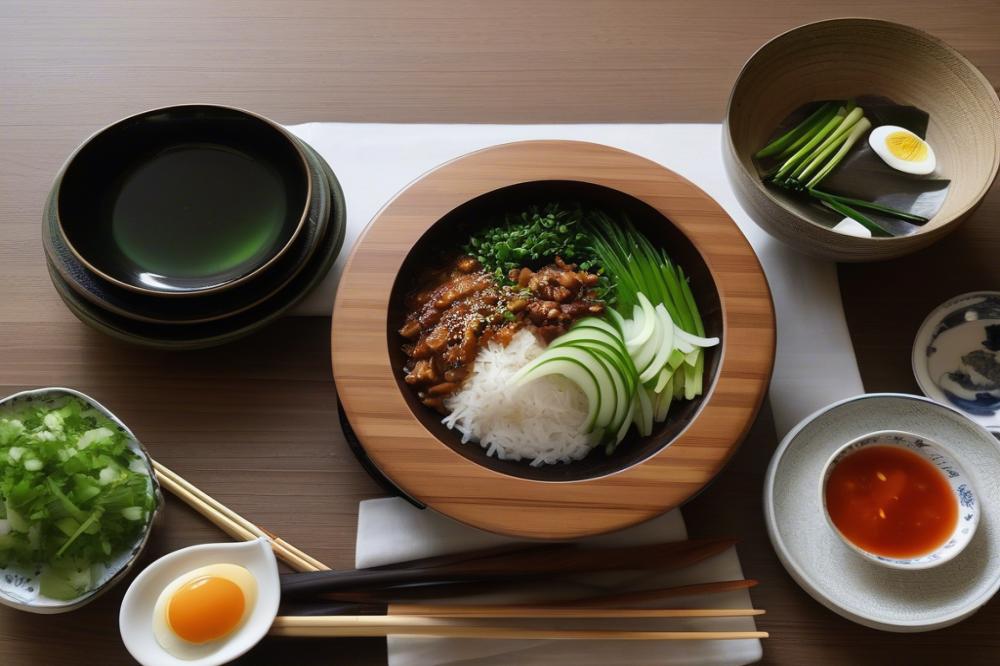

Recommended Accompaniments for Dwaeji Gukbap
Dwaeji Gukbap pairs wonderfully with a variety of traditional Korean side dishes. Rice is a natural match, serving as a perfect base for the rich, flavorful broth. Try adding fried eggs on top for a delightful touch. This can elevate the comforting soup even more. Fresh herbs, like green onions, enhance the overall freshness and aroma.
Pairing Suggestions with Side Dishes like Kimchi
Kimchi, well-known in Korean cuisine, complements the savory pork recipes perfectly. Its spicy and tangy flavors provide a nice contrast to the broth. Additionally, consider serving pickled vegetables or a simple salad. These add a crunch and balance out the richness of the rice soup. For those who enjoy heat, a plate of gochujang (Korean chili paste) can bring an extra kick.
Ideal Serving Temperature and Serving Style
Serving temperature matters significantly in making this dish enjoyable. Dwaeji Gukbap tastes best when hot, allowing steam to rise from the bowl. Ladle the soup into deep bowls and encourage guests to dive in. If desired, a sprinkle of sesame seeds on top gives an appealing look. Serving with chopsticks and a spoon can enhance the experience. It is an easy recipe to share, making it delightful for gathering family and friends around the table.
Nutritional Benefits of Dwaeji Gukbap
Many people enjoy the rich flavors of Korean cuisine, and Dwaeji Gukbap is no exception. This comforting soup combines pork and rice in a way that highlights their nutritional benefits. The main ingredients provide various essential nutrients, making it a satisfying meal choice. Pork offers a good source of protein and minerals, while rice adds carbohydrates that supply energy.
Pork is high in protein, which supports muscle growth and repair. In addition to protein, it contains important vitamins such as B6 and B12. These vitamins play a role in brain health and energy metabolism. Rice, especially when using brown or whole grain varieties, contributes fiber and vital nutrients. Fiber aids digestion and promotes a feeling of fullness.
Broth-based soups like Dwaeji Gukbap hold special significance in traditional dishes. They often include various vegetables and spices that enhance both flavor and nutrition. Warm and spicy soup can be soothing, especially in colder months. The broth itself is hydrating and can help with recovery from illness. Many people find broth-based soups to be nourishing and healthy options.
Balancing different food groups is important in any diet. When combined, pork and rice create a filling meal that can support a healthy lifestyle. Easy recipes for rice soup like Dwaeji Gukbap can be prepared quickly. They provide a flavorful experience that encourages people to enjoy home-cooked meals.
Including comforting soups in your diet can also promote emotional well-being. A bowl of warm soup can bring a sense of calm and happiness. Traditional dishes highlight the flavors of ingredients while offering a heartwarming experience. Spicy soups can also kickstart your metabolism, providing yet another reason to enjoy them regularly.
Wrapping Up the Experience
The joy of making Dwaeji Gukbap goes beyond just the act of cooking. It’s a journey through flavors that connects you with Korean cuisine and its rich traditions. As you simmer the pork and let the broth develop, the kitchen fills with wonderful aromas. This comforting soup brings warmth to both body and soul, making it a perfect choice for sharing with family and friends.
Don’t hesitate to try this easy recipe at home. Cooking can be a creative outlet, and this dish is a great way to explore your culinary skills. Whether it’s your first time or you’re revisiting it, the process remains simple and satisfying. Experiment with ingredients and make it your own while delighting in the results.
Traditional dishes hold a special place in our kitchens. They not only nourish us but also tell stories of culture and heritage. Keeping these recipes alive allows us to connect with the past while moving forward. Enjoying a bowl of Dwaeji Gukbap is a delightful way to experience a piece of history. Embrace the flavors and share them. Cooking truly enhances our lives.

